UNO Fest 2018. Interview with Guest Indigenous Curator Yolanda Bonnell.
Yolanda Bonnell is the very first guest curator at UNO Fest. She kindly answered questions not only about her role as curator, but also as the creator of bug, one of the shows in the festival.
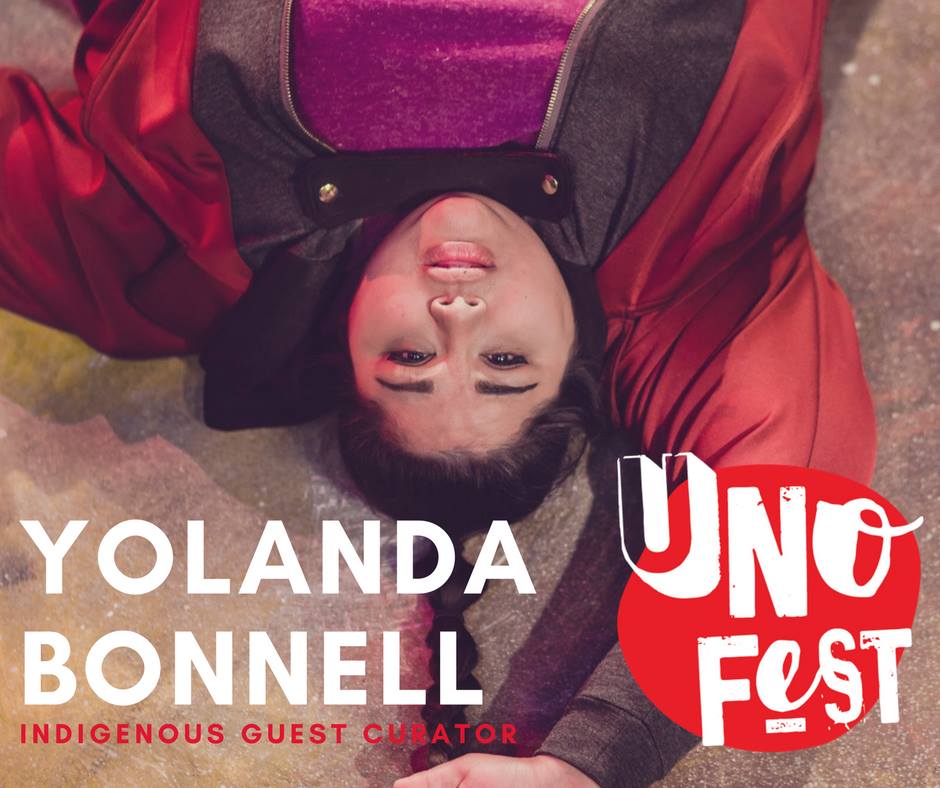
How do you see your role as Guest Indigenous Curator?
Well I was definitely honoured to be asked to be guest curator for the festival. I see it as an opportunity to highlight and bring another Indigenous solo show and expose it to new and different audiences.
To your mind what is the most important aspect?
The most important aspect for me was to ensure that I chose an Indigenous woman’s piece. Indigenous women are the most disrespected and silenced voice. We see that in our Missing and Murdered Women and Girls and the way in which we are treated by settlers. To me, it is vitally important to find any way we can to raise up the voices of our Indigenous women.
What do you wish to impart to the audiences in Victoria?
I wish to impart a level of representation to our Indigenous audiences in Victoria. It’s important that we feel seen and know that we’re not alone in many of our experiences. So, I hope that there are Native women that come and feel like Darla and I are telling stories that they can relate to. And for our settler audience members, I hope they can see that our voices and stories are valid and important and need to be supported.
You’ll be working with the Victoria Native Friendship Centre to offer workshops to youth—how did that come about?
The workshops were an idea I came up with a couple of years ago, after graduating from theatre school. I realized the importance of storytelling and using my voice and that there were so many different ways to communicate our stories. I wanted to impart that knowledge and teaching onto Indigenous youth. I truly believe that art can change things and I believe that it must start with our youth. There’s a feeling of hopelessness with them and really, who can blame them? This country isn’t helping them. This is why there are youth suicide crises in our communities. The leaders in this country are ignoring them and to feel like the world doesn’t care if you live or die? That white men can get away with murdering us, murdering our young brothers and sisters? That is deep pain. Our youth need healing. They need to feel like they matter; that their voices matter. That their stories matter. Being a creator changed the way I saw myself and gave me a hope that I couldn’t find anywhere else. My goal for these workshops is that these young folks find a way that they are comfortable with, to use their voices and tell their stories and maybe they connect with something and maybe it gives them hope and maybe then they can start healing through art.
As someone coming to Lekwungen territory, Heather (Lindsay) mentions you approached the local community—why was this important?
It was important for me to engage the local community so that we can learn from each other. Cultural exchange is important if we’re going to work together. There are so many different, beautiful nations spread all across Turtle Island and we’re all fighting the same war. I will be a guest on the Lekwungen territory so I’m excited about having the opportunity to learn from that community as I am bringing my own knowledge and sharing.
You selected Darla Contois’ piece—can you explain why.
Darla Contois is a warrior woman. I had the pleasure of working with her in 2016 in Falen Johnson’s piece, Two Indians. She has a fighter spirit and a loud, important voice. White Man’s Indian is such a beautiful piece. As I said before, it is vital that we are raising up the voices of Indigenous women and this is how Darla is adding her voice to that fight. By telling this story. My sister deserves this platform.
For bug:
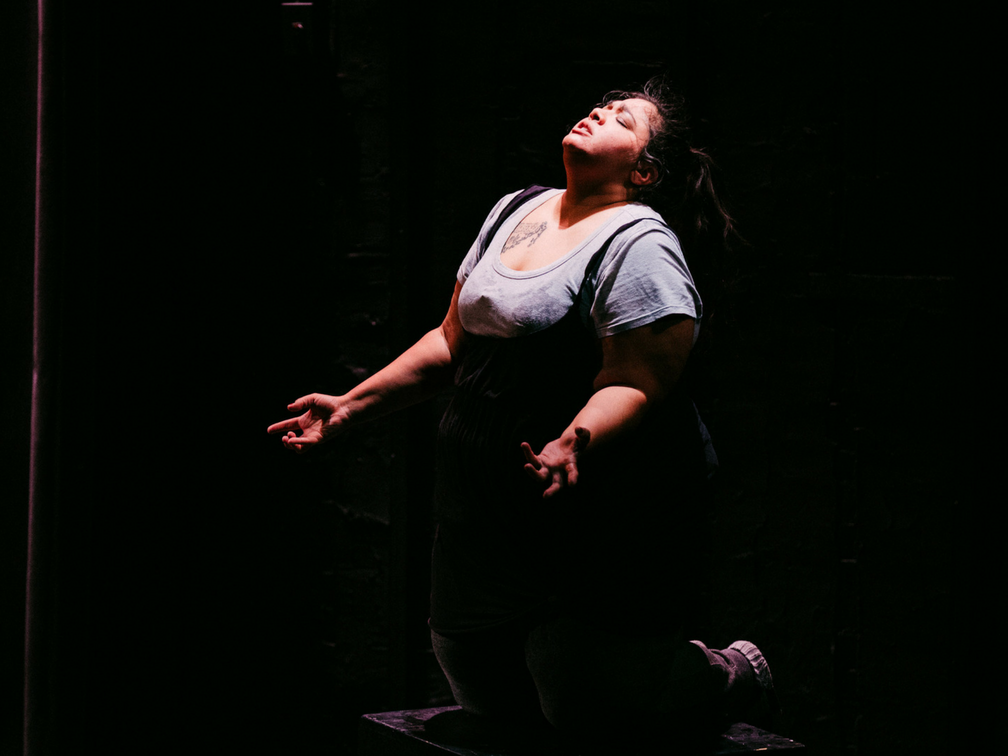
Yolanda Bonnell in bug
What sparked the creation of this show (can you speak to the creation process)? Is this your first one person show?
This show actually began as a project for theatre school (as they often do). We had to create a 15-minute piece for our final year and this was what I chose to write about. It was almost a completely different show at that time. I knew I wanted to work from the word bug.
I was walking to class and saw a little potato bug crawling across the sidewalk, so slowly. And I began to think about how far that journey was for it. Just to get from one side of the walk to the other. And the danger of potentially getting stepped on. As an Indigenous woman, I understood that feeling. The metaphor was not lost on me. Two years later, I sat down and began writing the text for Manidoons, who is the creature and manifestation of addiction and the text for The Girl and her story began to grow. How some folks treat the earth and animals, including insects – that there is a fear and disrespect and a sense of trying to have power over – for me, was linked to the treatment of Indigenous people – particularly women. And every iteration since then has shifted and expanded that narrative. And yes, it is my first one person show.
When did you debut the show (or is this its debut), and how has it changed since the debut?
As I said, this show has changed in some way every time I’ve performed it. I first performed a 15-minute version at Humber, then it was a 20-minute version at Weesageechak Begins to Dance, an Indigenous development festival at Native Earth Performing Arts, a 25-minute version at Rhubarb Festival at Buddies in Bad Times and a 45-minute version at Summerworks Festival as a one off. Now with all of the support we’ve been given, and with our production team, we’ve been able to develop a fully realized full length play. There have been many changes since the first few scripts. The biggest change being the addition of the character of the Mother.
Can you comment on the design aspect of your show, its esthetic?
I’m extremely excited about the design of the show. We hired Jay Havens, who is an Indigenous multidisciplinary artist, to be our set designer and scenographer. He has really created a magical space for this story to be experienced in. And it really is an experience. I don’t want to give away too much but the set has a distinct quality of nature and spaces in nature to it. And the audience becomes a part of that. I’ve decided to put the story in the round so the audience will really get pulled in and become a part of the story. That decision came from the questions I had surrounding what Indigenous theatre is. Circles are a big part of my culture and stories were traditionally told sitting in a circle – there are talking circles, the medicine wheel, dreamcatchers, there are circles in nature. And circles also indicate cycles. And there are many cycles in this piece.
What do you hope to inspire in your audience?
I hope to inspire a sense of change and moving forward. I hope Indigenous audiences find themselves somewhere and can see the hope. I hope that settler audiences understand where it is some of us are coming from and are inspired to use their platform of privilege to be responsible allies.
Who will be interested as a potential audience member? What would you say to entice someone to come?
I honestly don’t know who will be interested. I do hope Indigenous folks attend and offer support. I’m sure there will be a lot of settler audience members who come to feel good about themselves for supporting Indigenous theatre. I hope our allies come out. I do want everyone to hear this story.
If I’m trying to entice someone to come – I would just say that it’s a journey and an experience through the eyes of one Indigenous woman, who does not represent all Indigenous women, but there are aspects of all of our sisters in it. It’s a story of struggle, mistakes and hope for something more. Something different. Which I think is something we can all relate to.
What’s next?
Well outside of bug, (which is set for its premiere at the Luminato Festival in Toronto in June! And will be at REvolver in Vancouver the week after UNOfest!) I have two other projects in development.
Currently I’m finishing up a two-week playwright’s residency at the Banff Centre as part of the Playwright’s Lab where I’m working on my piece, White Girls in Moccasins. It’s really my identity story about trying to find my culture in a white washed world. It was part of the Rhubarb Festival this past February. I’m also continuing to develop my play, Scanner with Factory Theatre in Toronto. Really excited about the future of this piece as it provides a platform for 7 Indigenous female actors.
As an actor, I just accepted a contract on the West coast in the Fall, which I’m not sure I can talk about just yet, but lots of exciting things happening!
Significant accolades or awards?
I received some awards for my work in theatre school, which includes the Board of Governor’s Achievement Award upon graduating. During my time at Stratford, I received the Elliot Hayes Playwright Development Fund, which is a Tyrone Guthrie Award in support of Scanner. I am also fortunate to have had support from the OAC, TAC, CCA and NAC for my projects.
Is there anything I haven’t asked you that it would be important to know?
I would just say that when looking for work that can change the course of Indigenous theatre on Turtle Island, look to the Indigenous women that are making art. There are strong, loud, proud, creative, intelligent warrior women out there writing and creating ground breaking work. Look for them. Listen for them. Indigenous women are leaders.
For more information on my work, please visit www.yolandabonnell.com
bug created and performed by Yolanda Bonnell
Metro Studio Theatre
Tickets $18 through Ticket Rocket. Note: the first performance is Pay What You Can
Rating: 14+, Coarse language, Adult Themes, Discussions of suicide
Genre: Drama/Storytelling/Indigenous Voices
May 18 Friday 7pm
May 19 Saturday 4pm
May 19 Saturday 8:30pm
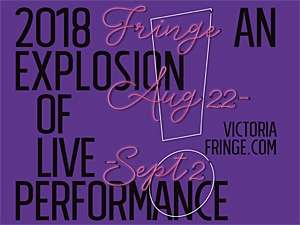

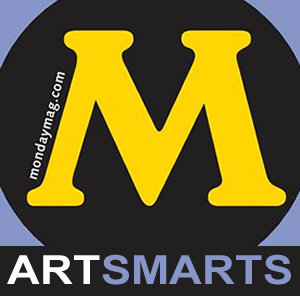
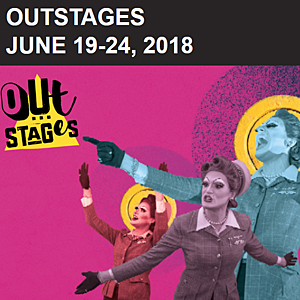
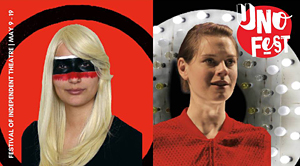
Speak Your Mind